
Frits
Peutz was born in 1896 in Uithuizen (Gr) as the son of a catholic
headmaster. To escape from the discrimination of catholics in the city
of Groningen in 1910 he was sent to Rolduc (L) for his education. After
his graduation in 1914 he went to the Technical University in Delft
with the intention of becoming a civil engineer, but in 1916 he decided
to become an architect instead. Although he was not graduated yet in
1919 he returned to Limburg and opened an office in Heerlen, in the
heart of the mining district that offered many opportunities for young
architects. In 1925 he finally finished his study. He became known for
churches in a variety of more or less traditional styles, usually
rooted in the traditions of his beloved province of Limburg, while in
his profane work he turned out to be a true Modernist. His most
important work is the Schunck department-store in Heerlen, a
revolutionary construction of glass and concrete.
Peutz' use of two completely different styles and his aversion against,
in his own words, the 'calvinistic-catholic dictatorship' of the Delft School
in the 1930's made him controversial outside his province. Within
Limburg he was much respected. During World War Two he wasn't allowed
to work because of his refusal to join the nazi-controlled Kulturkammer
('chamber of culture'). After the war he restored several damaged
churches, and also replaced several others.
Peutz was both a Modernist and a Traditionalist, and used both styles until the end of his career. He retired in 1970 and died in Heerlen in 1974.
The following is a list of Peutz' work, both churches and profane. It is still incomplete.
1919 Heerlen (L): Mansion Wijnands
House for a (notaris). Porch with pillars at the front.
1921 Heerlen (L): Broederschool
School. No further details.
1922-1923 Brunssum-Rumpen (L): church Vincentius à Paolo
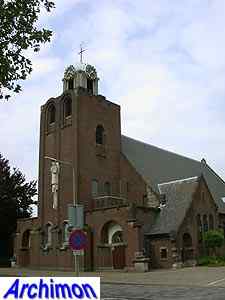
Peutz' first church, a building with Berlagian influences.
1929 Heerlen (L): church H. Antonius van Padua
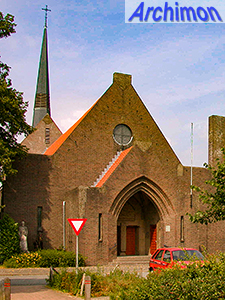
Church in Traditionalist style.
1929 Houthem (L): mansion Casa Blanca
House in a style that was probably influenced by the work of Dudok.
1931-1933 Berg en Terblijt (L): church H.H. Monulphus en Gondulphus
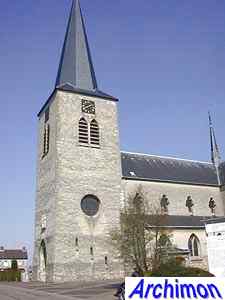
Cruciform basilican church in a style inspired by Gothicism. Executed in marl.
1931-1932 Ransdaal (L): church H. Theresia
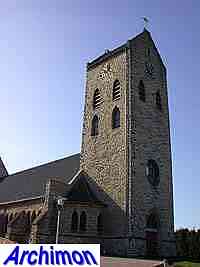
Aisleless church in Traditionalist style. Tower with saddleback-roof. For the outside of the walls a local natural stone was used, for the interior marl. The choir is higher than the nave and has windows in its sides.
1931 Heerlen (L): ULO
School in a style that was probably influenced by the work of W.M. Dudok.
1931 Heerlen (L): house Op de Linde
House in Functionalist style.
1932-1933 Heerlen (L): retraitehuis Mgr. Schrijnen
Retreat in Functionalist style.
1933 Heerlen (L): Modehuis Schunck
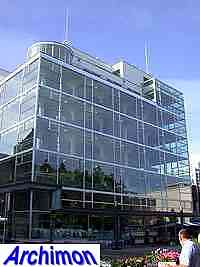
Department-store in Functionalist style, with a skeleton of concrete covered with glass walls. Better known under the name Glaspaleis.
1935 Waubach-Abdissenbosch (L): church St. Bernadette
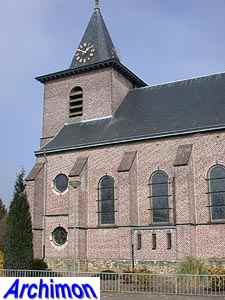
Small aisleless church in Traditionalist style.
1936-1942 Heerlen (L): town hall
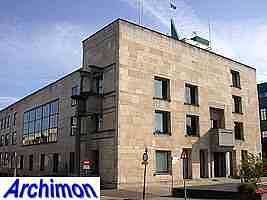
Building in Functionalist style.
1936 Maastricht (L): church St. Pieter
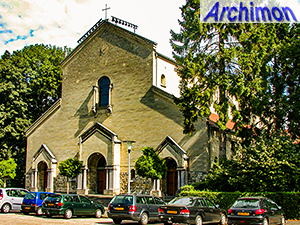
Church in Traditionalist style based on early christian churches, built of natural stone.
1936 Maastricht (L): church O.L. Vrouw van Lourdes
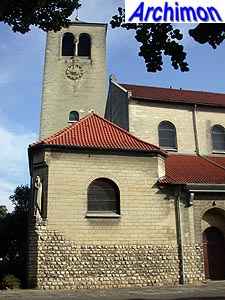
Church in Traditionalist style built of natural stone.
1937 Heerlen (L): Cinema Royal
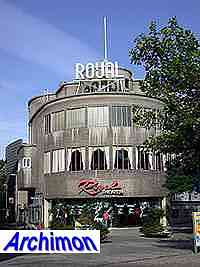
No further details.
1940 Tegelen (L): town hall
Town hall inspired by Classicism, with a front with pillars and a tympanum. In the 1980's part of the building was replaced.
1949 Posterholt (L): church H. Matthias
Traditionalist basilica, executed in marl.
1950 Wessem (L): reconstruction church H. Medardus
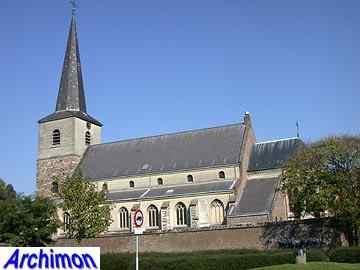
Peutz used the remains of the badly damaged church and archeological findings to reconstruct a Romanesque church.
1951-1952 Heerlen (L): church St. Anna
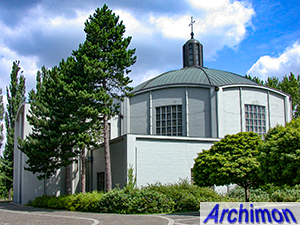
Square building with a large dome at the centre.
1951 Oirsbeek (L): enlargement church St. Lambertus
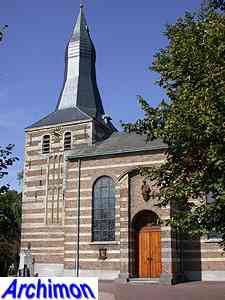
Of this old church only the tower was saved. Peutz designed a new nave which, like the tower, is built in alternating layers of brick and natural stone.
1952-1958 Meijel (L): church St. Nicolaas
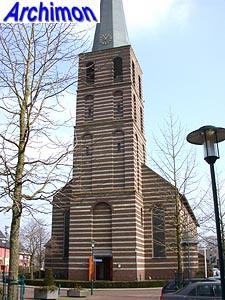
Hall-church in Traditionalist style, with a silhouet that resembles that of a medieval church. Alternating layers of brick and marl. Tall spire of reinforced concrete.
1954 Weert (L): housing complex Dillenburg
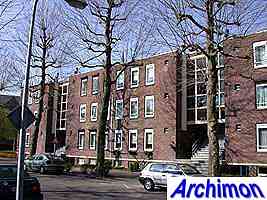
Flat of three storeys high. Symmetrical building of brick, with horizontal accents.
1955-1956 Roermond (L): church Heilige Geestkerk
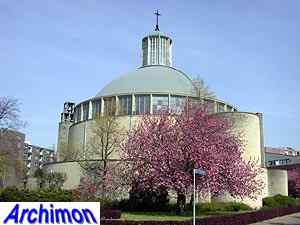
Dome-church of concrete, covered with marl. A porch was altered in 1997.
1956 Urmond (L): church St. Martinus
No further details.
1956-1957 Treebeek (L): church O.L. Vrouw van de Rozenkrans
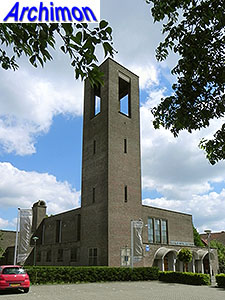
Church in modernist style.
1960-1961 Heerlen (L): Stadsschouwburg
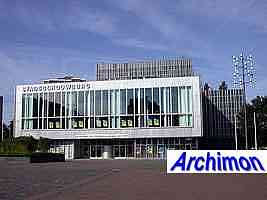
No further details.
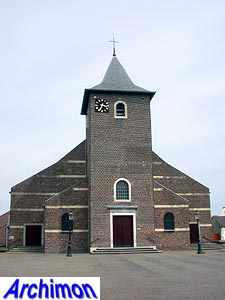
New larger nave for older church. Three-aisled pseudo-basilica in Traditionalist style.
Modernist church with front tower. Demolished in 1997.
1961-1963 Burchten (L): church St. Catharina
Peutz' last church. Three-aisled pseudo-basilica in Traditionalist style, incorporating an older tower.